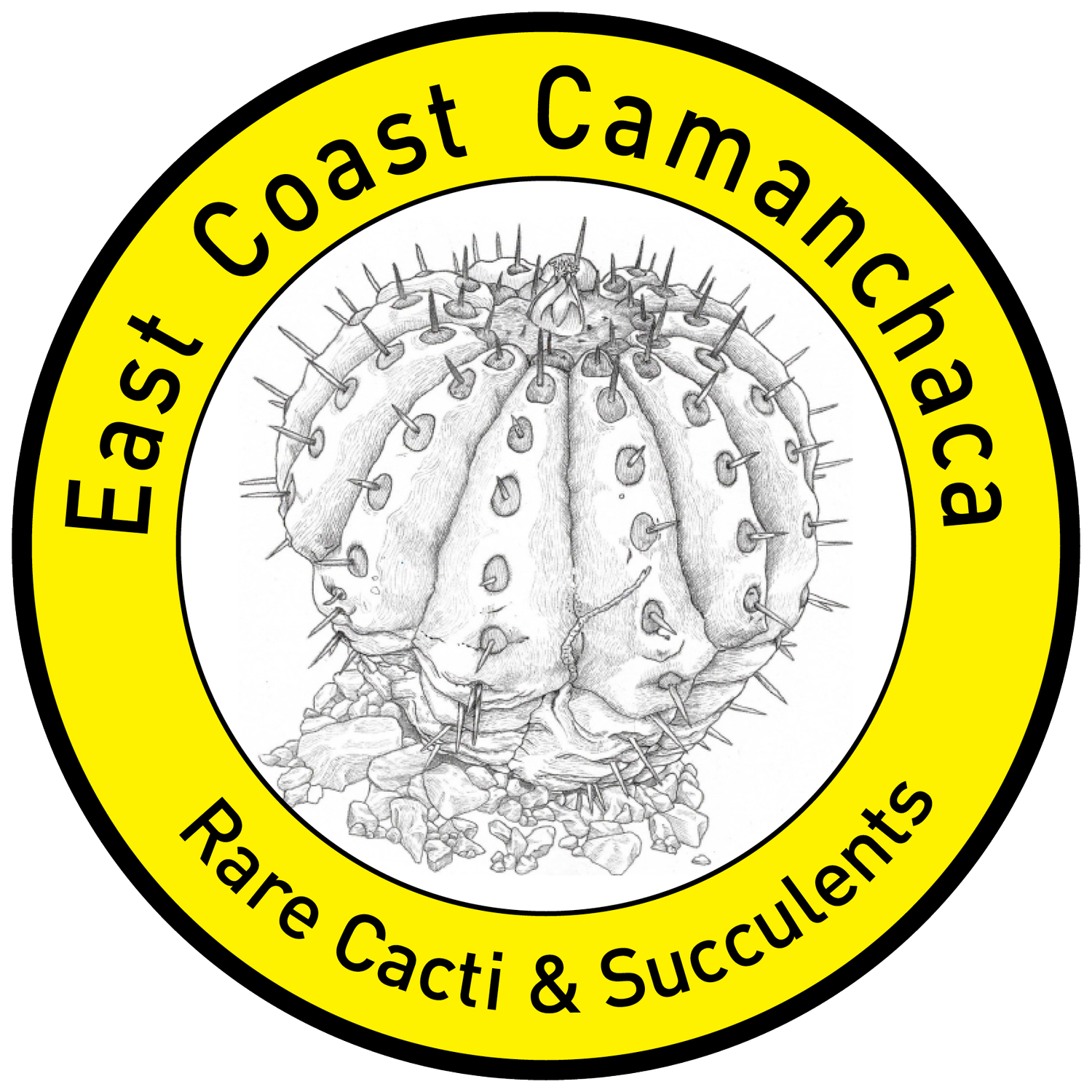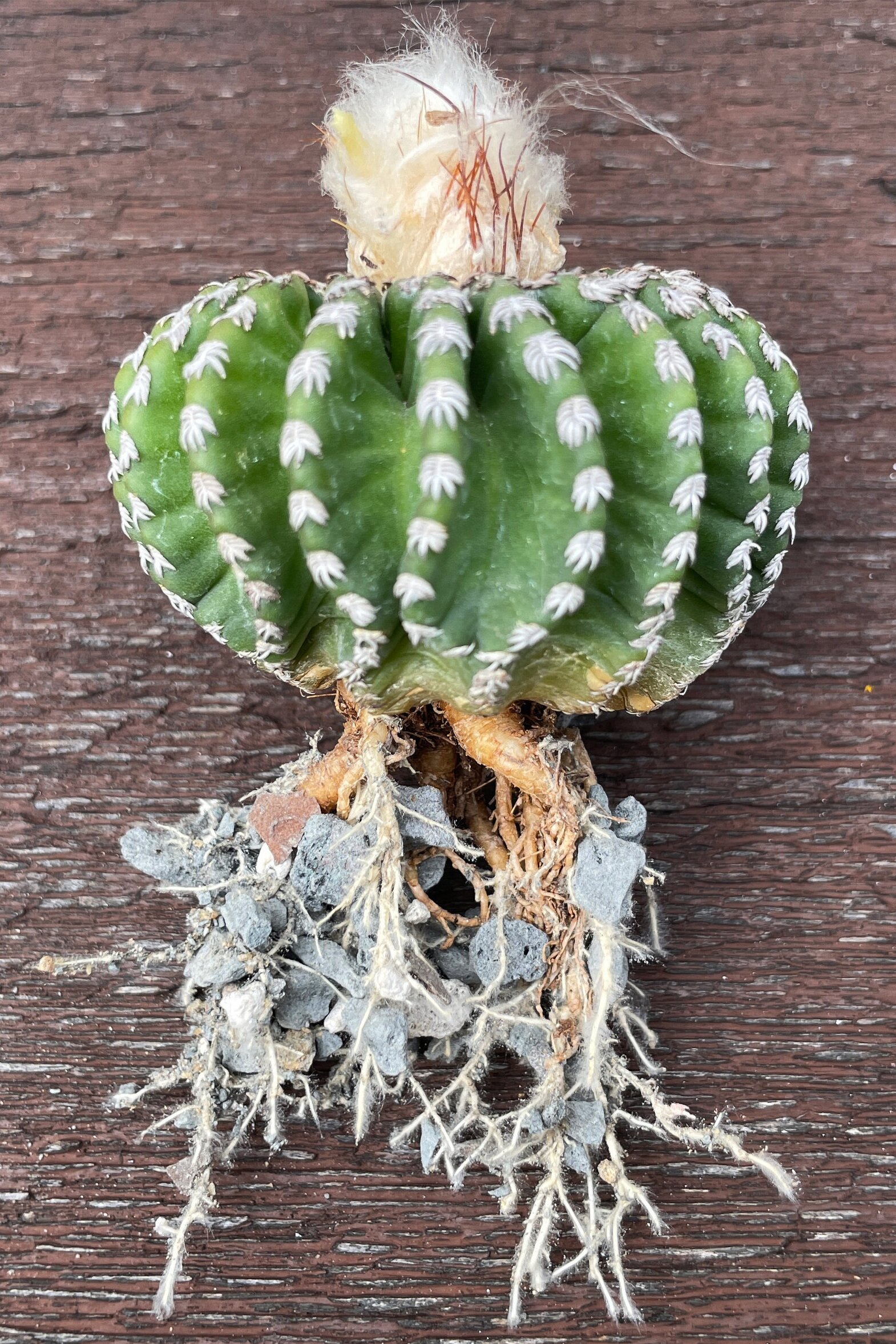Mineral soil for cacti and succulents
When you start collecting rare cacti and succulents, you quickly learn that the peat-moss-based “cactus potting soil” that you can find at big-box home improvement stores is simply no good for more sensitive and rot-prone plants that you quickly become interested in as a collector. With so much organic content, peat-based soil is great at retaining moisture but not so good at either absorbing it once it is completely dry or draining, after becoming wet; which means half the time you are left wondering how long your plant’s roots will stay wet. As you probably know, wet roots are dangerous to cacti and they can easily succumb to rot if they are not provided the aeration and drainage they require after a “rain” (watering) event. On the other hand, many of the “mineral potting mixes” you find on the internet today are made with low-quality constituents to cut down on costs, since shipping mineral soil is not cheap. So you end up paying to ship a box of dust since low-quality mineral constituents break down quickly and turn to powder which is also bad for your sensitive plants.
East Coast Camanchaca soil mixes are made with the best mineral and organic constituents, to ensure your valuable and irreplaceable plants can absorb moisture without ever remaining wet so they can thrive and grow true to their natural traits, instead of bloated and green. ECC soil may not be for all the plants you own, but should rather be saved for those irreplaceable plants in your collection that you would definitely want to grow old with. After all, we are collecting plants that can easily cost hundreds or thousands of dollars and should not risk them to $7 potting soil.
Big Box Potting Soil
Potting soils found in home improvement stores generally work great for the type of plants found in those stores. Plants that have been in cultivation for generations, have strong root systems, and more importantly have become accustomed to those potting soils heavy in peat moss. These potting soils are widely used in nurseries because a mix high in organic content and which retains more moisture helps save on water costs and makes small plants grow faster and are somewhat safe during the first years of development. Hydrophobic plants like Ariocarpus, Astrophytum, Copiapoa, Lophophora, Pachypodium, and others have all evolved to thrive in soil that is poor in nutrients and which does not retain moisture so their root systems are able to aerate and dry out quickly after rain events. This means we must adjust our potting soil to mimic their natural habitat since potted plants have much less space to spread their roots which also cuts down on the aeration of the root tissue.
Our two potting soil mixes North and South American are safe for all cacti and succulents but do have some fundamental differences: North American is 100% mineral inorganic, while South American contains 15% organic content and MYCORRHIZAE which are beneficial fungi that help cacti roots develop and absorb moisture more efficiently.
North American cacti (Ariocarpus, Astrophytum, Aztekium, Ferocactus, Lophophora, Mammillaria, Pelecyphora, Turbinicarpus, etc) seem to be more sensitive to moisture and organic content in the soil. For this reason, I started using 100% inorganic soil for all plants larger than a golf ball and they all took off! ECC North American Cactus Soil is made up of lava rock, calcined clay, pumice, and other minerals of the highest quality so you receive small particles that do not turn to dust and provide adequate moisture absorption, retention, and evaporation. Inorganic soil dries faster and is, therefore, more forgiving of mistakes when watering because rot does not have the organic matter it needs to feed and thus has a harder time attacking your plants. Inorganic soil can also be left in a pot longer (up to 3 years) without any degradation of its constituents, meaning you have to re-pot less often decreasing stress on the roots.
ECC South American Cactus Soil can be used for smaller plants (both North and South American) because it contains only 15% organic content which is safe for all cacti and succulents, especially when they are smaller since seedlings do benefit from added moisture retention. You can also add cheap peat moss-based cactus soil to ECC North American Cactus Soil, to create your own mix for smaller seedlings or if you live in extremely dry areas where a little organic content can aid in moisture retention but it is recommended you never add more than 20% organic content (cheap cactus soil).
South American cacti and African succulents (Copiapoa, Discocactus, Eriosyce, Euphorbia, Melocactus, Neoporteria, Pachypodium, Pilosocereus, and Trichocereus, etc) seem to do better with a small amount of organic content in the mix, so our South American Cactus Soil contains 15% organic content and MYCORRHIZAE to aid in root development and nutrient uptake. It is safe and recommended for use on North American seedlings as well, since seedlings always benefit from a bit more moisture than mature plants. I do not recommend adding anything to our South American mix, unless it is to be used for plants like Trichocereus which do love nitrogen and can tolerate more moisture but I personally do not add anything on as the balance of the mix is dialed in as-is, providing the right compromise between moisture retention and evaporation.
Watering Plants in Mineral Soil
Mineral soil does drain faster than organic-based potting soil, but you should not rush to change your watering schedule. I recommend you maintain your current watering schedule and only adjust over time, if necessary. Most (if not all) plants will acclimate to the added aeration and quick drainage and not necessarily require extra watering, so it’s best to give them time to settle in before introducing more moisture. Freshly potted plants may exhibit signs of “transplant shock” and look dehydrated, but you should refrain from watering during the first few weeks to a couple of months to give the plant enough time to regenerate its root tissue.
Mineral soil can be watered from above, or by dunking the pots in water since ECC soil does not float up to the surface like other mineral soil mixes. I usually dunk them during springtime (roughly 15 minutes), and only water from above during hot summer months and fall since these are times when a wrongly timed watering can prove deadly, and watering from above will dry out faster than duking the pots. When watering for the first time of the year (spring), you can even experiment with leaving some pots submerged in water for an hour or two to “wake up” the roots but do this at your own risk since some plants may not tolerate it, and make sure to never submerge the crown of the plant, only the soil. Always make sure there are sunny warm days ahead before watering, and never water a freshly potted plant. More info on watering freshly potted plants here.
Fertilizing Mineral Soil
As previously mentioned, cacti and succulents prefer soil that is low on nutrients. This helps ensure they exhibit their best natural traits that are only expressed due to nutrient and hydric stress (low amounts of nutrients and water). Plants that are heavily fertilized may show signs of rapid growth, such as green coloring, excessive branching, and etiolation (elongated growth patterns). To avoid this, I always recommend fertilizers are used in 1/4 strength on the label and should be meant for cacti or tomatoes which means their nitrogen content is low. You can make certain that the fertilizer is correct by checking the NPK label, which stands for nitrogen (N), phosphorus (P), and potassium (K) with a number that stands for the percentage of the chemical by weight of the product (Ex. 2-7-7). Stick to fertilizers with 1-2% Nitrogen, and always dilute them to 1/4 the strength recommended on the label. I will fertilize most of my plants once or twice during spring and recommend you dilute the fertilizer, even more, the first few times you use it until you figure out the perfect dilution rate for your plants, to avoid overfeeding. I never fertilize Copiapoa, because they seem to always branch out when fed and solitary plants like C. cinerea should not form branches until they are extremely old. Feeding in extremely low dosages is ok for most plants.





